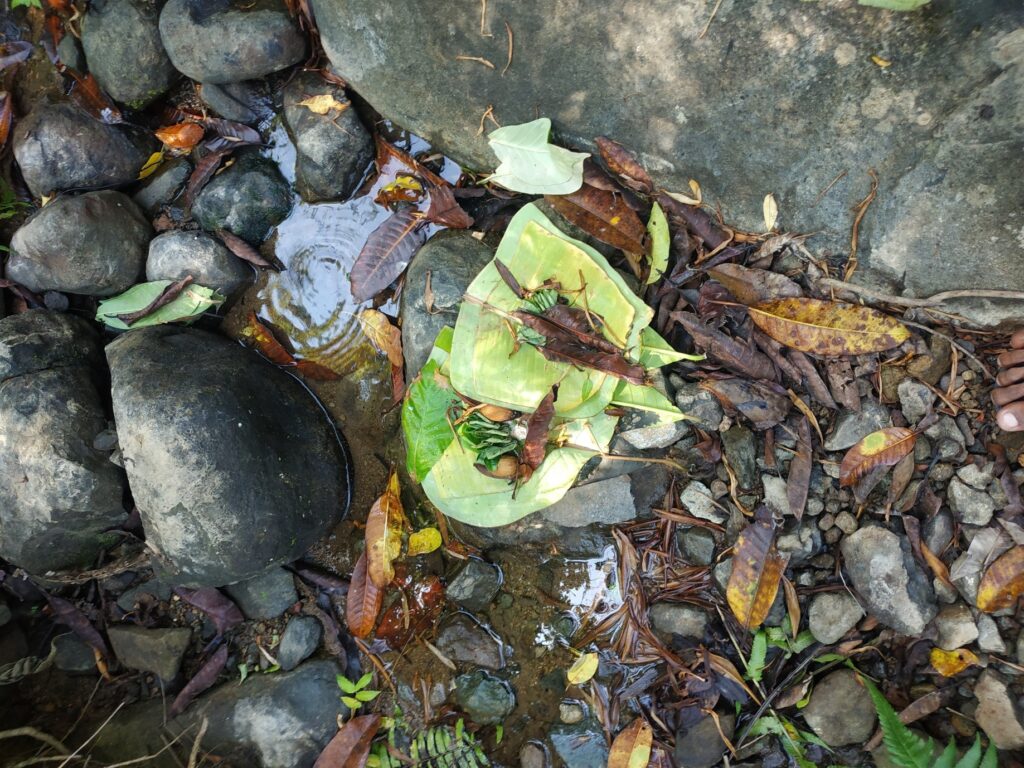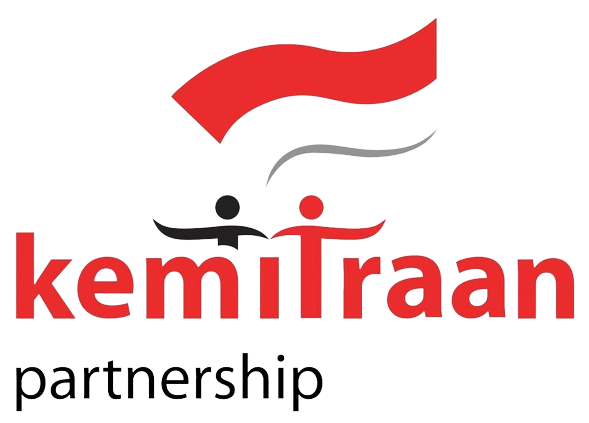Cindakko is one of the three hamlets that form Bonto Somba Village, in Tompobulu District, Maros Regency, South Sulawesi. The three hamlets, Bonto-Bonto, Bara, and Cindakko, are also the borders of three districts at once, Maros, Gowa and Bone. The Cindakko region is divided into three main parts, Paranglalua, Bokkongmata-Kacoci, and Jakka-Jampua.
These three areas are quite far apart and each is separated by three large rivers, Malente, Erlembang and Matteko. Apart from being decorated with large rivers, Cindakko is also surrounded by slopes, most of which contain pine trees, sturdy and densely packed, which at certain times are covered in fog. The people who inhabit this place are known as the Cindakko indigenous people. Their ancestors have lived in this place for hundreds of years.
Today, most of the Cindakko landscape is lined with terraced rice fields. These rice fields are cultivated by the Cindakko indigenous people as one of the main sources of livelihood. The Cindakko indigenous people manage their rice fields, planting rice only once a year when the rainy season comes. Because they live on mountain slopes, they do not have sufficient technology to supply water to their rice fields when the dry season arrives.
Every time I see rice fields neatly arranged at the foot of the mountain, I always wonder, when did the Cindakko indigenous people start planting rice. For at least the two months that I have lived and settled here, there has been no information that could lead me to the answer to that question. But Daeng Ramallang, one of the traditional leaders with the title Gallarang, who is in his 70s, told me that his parents had planted rice for a long time. “I was [aged] around 6 or 7 years old at that time,” Daeng Ramallang tried to remember. "And I used to help my parents and grandfather plant rice in the fields," he continued.
Apart from living from the results of planting rice in the rice fields, the Cindakko indigenous people also live from the results of gardening. They plant their gardens with various types of plants, such as corn, coffee, vegetables, and various types of fruit such as avocado, mango, banana, and others. Even though the plants in their garden are not enough to take to market, they are enough to support them.
For the rest, they tap palm sap to make brown sugar. One of the products they make to sell in the market. Daeng Saparuddin told me that almost all the things he managed to buy, including the tractor he now uses to work his rice fields, was the result of selling brown sugar. "Just adding one cow," explained Daeng Saparuddin.
The Cindakko indigenous people also raise cows. Unlike breeders I've seen before, the Cindakko indigenous people raise cows by simply releasing them. No cage. Cows for the Cindakko indigenous people are like savings, if they need money suddenly, they sell their cows.
Later, after they received permission to manage 321 hectares of village forest, the Cindakko indigenous people began their activities as pine sap tappers, which they also often said was a source of livelihood that was quite helpful for them.
One thing that I find interesting about the Cindakko indigenous people, which is perhaps also a characteristic of various indigenous communities, is that almost all the activities they carry out in their daily lives are ritual events. This means that there is no activity they do without ritual. All types of livelihoods above, especially in terms of growing rice, in the process, are always accompanied by various rituals.
Before working on the rice fields, the Cindakko indigenous people perform the appanaung ri je'ne ritual which aims to ask for and send down water - the water they hope is not too small nor too big. "We ask our ancestors not to let the water come in too little, because if the water is too little the plants will die. "But at the same time we ask that the water not be too big, because if the water is too big, the plants, even us, could die," explained Mrs. Eni, as one of the traditional holders, when I asked her about the ritual.
When the appanaung ri je'ne ritual is performed, it means that the Cindakko indigenous people have arrived at the planting season. But to plant, they have to wait until the next ritual is finished. The rituals take turns and should not be done haphazardly.
The next ritual is the cow accera ritual. This ritual is carried out as an effort to appreciate cows as animals that will be used to plow fields. Even though since 2001, most of the Cindakko indigenous people have had tractors and plowing machines from the proceeds of selling their cows, they still carry out the cow accera ritual. Just like treating cows, they believe that machines are also alive, and need accera (appreciation and giving blood).
After the cow accera, the Cindakko indigenous people perform the appalili ritual, a ritual which indicates that the process of working on the rice fields can be carried out. When the rice fields have been cultivated and the rice has grown, the Cindakko indigenous people perform the accera solongan ritual (appreciating the water channel). They come to the upstream water channel, where the water from their rice fields passes, and perform a ritual.
Furthermore, about ten days before the harvest season, traditional leaders will announce the a'liing days. A'liing is one of the customary laws that applies in Cindakko which is similar to the sasi customary law in Maluku. During the seven-day a'liing period, indigenous people are not allowed to cut grass, trim branches, cut down trees, fish or kill living creatures, and enter the forest. The only thing you can do is stay at home.
The a'liing period is determined by the traditional leaders after the ritual. Based on Daeng Ramallang's confession, in the past, their ancestors usually spent three months a'liing. This customary law is an effort to revitalize nature before indigenous people start harvesting or appapole.
Another traditional ritual, which also represents the relationship between the Cindakko indigenous people and nature, is the a'tumpi ritual. Before this ritual begins, the Cindakko traditional community, especially traditional women, cooks tumpi cakes made from sticky rice, brown sugar and coconut. This cake is packaged and served in a small bowl equipped with several other types of ritual materials such as betel leaf (leko), areca nut (rappo), round pieces of coconut (kaluku), rice (berasa'), and candles made from candlenuts.
The characteristic of this ritual led by Puang Sanro is that it is carried out without sleeping all night. The Cindakko people, especially the women, surround the tumpi cake they have gathered, and they try to stay awake until morning. When I asked, why do people stay up late guarding cakes?
Daeng Eni, one of the traditional leaders who has the title Bali Karaeng, answered, "one tumpi cake means one plot of rice field, one bunch of this tumpi, which contains seven pieces of cake, means one forest area," paused Daeng Eni while showing me one bunch of cakes. tumpi in his hand, "meaning, losing one tumpi cake means losing one plot of rice field, that's why we stay up late, to look after all our cakes." Puang Sanro also explained to me that this ritual was a form of gratitude from the Cindakko people towards their ancestors who had inherited the land where they live now. "This is just a form of thanksgiving for our ancestors, who have bequeathed land/rice fields to us and we are still healthy now," responded Puang Sanro when he saw that I was beside him when the ritual was finished.
Apart from rituals related to the livelihood practices of the Cindakko traditional community, there are various other types of rituals which are also carried out every year in the Cindakko traditional community, such as accera tambara' (purification of traditional heritage), accera balombong (purifying the place where brown sugar is made), paeentengi ada' ( establishing customary law for indigenous people who commit violations such as extramarital relations, elopement or silariang, etc.), a'mole (rituals carried out to find guilty people, a kind of customary court), a'rangka (rituals to pray for people who people in the village and the world to gain safety), and a'tumpi (a traditional ritual carried out once every three years). In the process, at least as I observed, these rituals represent the relationship between humans, nature and the ancestors of the Cindakko traditional community.
These rituals, apart from including spiritual aspects, also include social aspects. For example, every time a traditional ritual or celebration (wedding party, harvest party, a'tumpi event, a'rangka event, etc.) is carried out, male traditional residents, both young and old, come and gather. to perform the a'llanja or mallanca tradition. Mallanca or a'llanja comes from the Bugis-Makassar word which means calf fighting. They carry out this tradition together, and usually, it is in this tradition that they meet again and joke with each other. Rituals for the Cindakko indigenous community, in the end, also become a forum for building social cohesion in the Cindakko indigenous community.
The Cindakko indigenous people perform various rituals, the essence of which includes the three aspects of intersubjective relationships between humans, nature and ancestors, as ideal representations of their daily lives. Rituals are a reflection of the life of traditional communities. The appanaung ri je'ne ritual (ritual of asking for/lowering water), for example, is carried out by them as a form of ethics and their responsibility towards other subjects, in this context it is water as a 'subject' that has enabled them to start managing the rice fields even though the rice fields -Their rice fields are located in the highlands.
They also believe that nature—the forest where they live and earn their living—is an important part that supports their lives. Nature has allowed them to live so it is necessary to maintain good relations between them. To maintain a good relationship between nature and their ancestors, the Cindakko indigenous people perform rituals in every phase of their lives.
When I first arrived in this community, every time I asked, "What is this ritual for, ma'am/sir?" They always answered, "to be grateful to our ancestors for what we got from our land, as well as to convey to our ancestors that we still remember them, still protect the nature they inherited." Almost all the traditional rituals carried out by the Cindakko indigenous people illustrate the relationship between indigenous peoples and nature and their ancestors.
*Article written by: Andi Alfian, CRCS UGM student conducting research in the ESTUNGKARA Program


